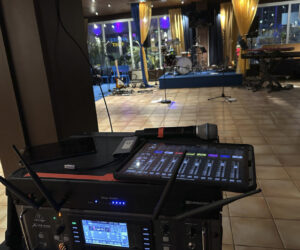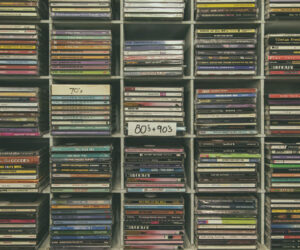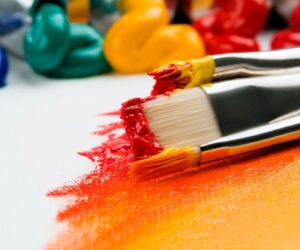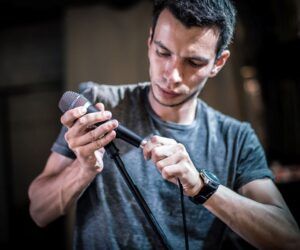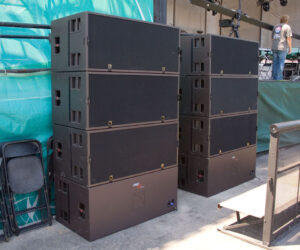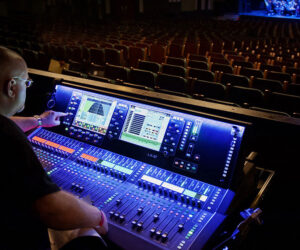It’s the opening night of the tour. The lights go down, the crowd starts screaming with excitement and the first chords ring out – this is the moment we’ve been working towards.
We all know that a lot of the work to bring this show to life has already happened earlier the same day, starting many hours ago when the production team and riggers arrived before sunrise for mark-out. But what those excited audience members may not realize is just how much pre-production preparation was taking place months and months before that, to get this show on the road.
I’m a monitor engineer with almost 30 years of experience in the live music industry, 18 of those mixing arena and stadium shows, and I’d like to share some of what I’ve learned about effective audio pre-production before going on tour. Some of these methods are staples that I employ every time; other aspects and considerations are more nuanced depending on the artist and type of tour.
So let’s dive right in – how do we get ready to rock?
Myriad Questions
The first stage of preparing for a tour is hunting and gathering information. I’ll have a lot of “w, h” questions – who, what, where, when, why and how? My first port of call is usually the production manager, who, in most cases, will have been the one to hire me.
My first question is about who’s involved in certain roles. I’ll need to connect with the audio supplier, musical director, musicians (or, depending on the tour, the backline techs), front of house engineer, and, in the case of a two monitor engineer scenario as sometimes happens with major productions, my counterpart. Chances are I’ll already know some of the key personnel, and if the artist is an existing client these conversations will be to simply touch base and discover whether anything has changed from last time around.
If I’m new to the production, I ask the production manager why I’m taking over. Was there a problem with the previous engineer (I don’t need details unless it’s a particular situation with the artist which I need to be aware of), or are they simply unavailable? If appropriate it’s helpful for me to speak with them about the show and understand what the performers are used to.
Next up I’ll make contact with the FOH engineer (and, if I’m sharing duties, the other monitor engineer) and ask:
What do we know so far? Have they worked with this act before? Which of us will create the input/output (I/O) spreadsheet, and in what format? What console will they use? If it’s the same brand as me, will we share an input rack? What are their microphone and DI preferences? With a couple of kick drum and vocal mic exceptions, I’ll generally defer to the FOH engineer’s choice because I figure they have much larger and more varied audio environments to manage than I do.
Next I’ll need to know the requirements of the performers. Who I contact regarding this will depend on the situation: in the case of of a solo artist or vocal group whose band consists of session musicians, I’ll contact the music director and individual musicians. In the case of a band who are themselves the artists (such as Queen, Muse etc.), I’ll contact the backline technicians.
In either case I ask what instruments we have, what inputs I’ll be taking from each player, and how they want to receive their mixes (i.e., wireless/hardwired in-ear monitors and/or wedges). I need to know whether there any extra outputs required – for example, many drummers like to have their own mini-mixer, to which I’ll supply a stereo mix and a direct split of the click so they have control of it.
Drummers and bassists may also use a shaker or sub, to which I’ll need to supply a mono mix. I also ask if we have recorded track inputs – almost all live shows will have some track component such as additional strings – and if so, how many and how they’re divided up.
From there I can start to create the I/O patch and discuss with the FOH engineer which mics and DIs we’d like to use. I also ask the MD for a working setlist – this is likely to evolve before we play the first show, but it’s always good to know which songs are likely to be candidates.
Gear Specifics
Now that I have this information, it’s time to contact the PA company account handler. With a broad idea of the channel count and general monitor requirements, I can put a rough spec together and share that with our audio supplier.
I don’t use anything particularly unusual so there aren’t too many surprises here; the purpose is to establish a relationship, enable them to quote with a degree of accuracy, and also to inquire as to who they have in mind for our audio crew. I like to make my own suggestion for the monitor technician role as we’ll be working closely together, but PA companies often like to use people who know their way of doing things, so this is a good time to have that conversation. This is also the time to ask when they plan to prep the equipment, so that I can put the dates in the diary and plan my own time.
Once the crew decision is made, I’ll speak to my tech and we can chat over how we plan to do things, who’s responsible for what, and I’ll send them what I know so far so that they can think about how they want to do the stage patch.
If it’s not a one-stop supplier and we’re picking gear up locally, there’s a lot more work involved in the advancing. Depending on where we’re going in the world, the FOH engineer and I need to put together a very comprehensive and detailed audio spec in clear, simple language with no room for misinterpretation.
After this is sent out to promoters, we’ll receive their counter-riders (where the local supplier makes the counter offer of what they can supply) and the negotiation begins. This can be a rather time-consuming process as it has to happen for every city, and it’s worth considering whether you plan to carry any equipment with you as excess baggage. On my current fly-tour in China we’re carrying all our own RF equipment and picking up larger items such as consoles, PA, stage fills and amps locally.
If you take this approach, everything has to be appropriately packaged into sturdy cases each weighing under 32 kg to meet airline regulations, and carnets have to be prepared and presented at customs in each location. Another option is to use a rock ‘n’ roll freighting company that will take care of the shipping and customs for you – it’s a little more expensive, but is money well spent to remove pressure and make things run more smoothly.
Naturally there will be ongoing conversations with suppliers and production as the tour approaches, and other questions I’ll ask are: How far off stage will monitors be positioned (important for the length of cable runs), and will I have line of sight or be working off a camera feed? What is the stage layout? What make and model of IEM moulds are the band, and especially the artist or singer, using?
Finishing It Off
Now it’s time to get creative! With the pre-production paperwork done, it’s time for the fun stuff. I’ll make a playlist of the proposed set in Apple Music and listen to it when I’m driving and going about my business.
I like to listen both on the car stereo and on my IEMs so I can get a sense of the shape and detail of the songs, and I don’t consciously analyze particularly heavily – instead I like to listen enough times that I develop a “muscle memory” of how the recorded version sounds, meaning I can instinctively recreate a similar mix when the time comes because I already know what sounds “right” or “off.” I find this method particularly useful because repetition will be how the people I’m mixing for will have learned each song, so it puts me into a similar headspace.
If I’m working with a band for the first time I also like to get the live multitrack recordings from an earlier show where possible. Hearing the inputs at source, long before I hear them for real, gives me a head start in noting any areas that might require some particular attention, such as a very dynamic vocal range, spill down certain mics, and what to expect on the hard drive backing tracks.
If it’s possible to actually spend time on my console of choice using those tracks as copied audio in my session file, it puts me in an extremely good position to experiment with building mixes and hearing the interaction of the instruments coming together into familiar musical arrangements.
I prefer to do my programming from scratch on the console I’ll be using because I find it easier working on the large-scale layout. In an ideal world, I like two or three days of warehouse prep – however, budgets often dictate whether this is practical, and if there’s only one day of my prep time in the budget, I’ll do my preliminary programming at home using the console offline editor software and I’ll send the session file to the PA company.
This way, when I arrive at the prep warehouse I can hit the ground running – all I have to do is connect to my racks, do the soft-patching, and providing the gear has been well prepped by the warehouse staff and my tech, we should be pretty close to a line check.
When we’re satisfied that everything is as it should be, it’s time to make sure everything is properly labeled (I don’t want any head-scratching when we load in to the rehearsal studio on day one!), before we pack it all down and load the cases onto the truck.
Following this structure has served me well over many years of touring, and using previous work as a template (i.e., for specs) serves as a useful reminder so that no vital aspects get overlooked. I hope there are some ideas here that will help you prepare for your next project, whether it’s a one-off event, a festival, or a long and varied tour. Happy gigging!





